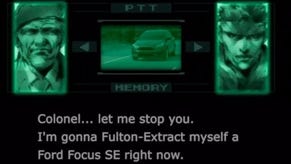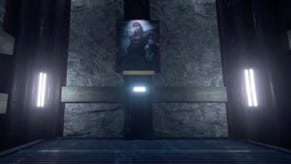Face-Off: Metal Gear Solid 5: Ground Zeroes on PC
A sublime and adaptive PC port from Kojima Productions.
Nine extra months in development, the PC's first Fox Engine title vindicates the wait with visual upgrades over the well-received PS4 and Xbox One versions. There are plenty of added features on paper, from its improved lighting via an increase in deferred lights per scene, enhanced level of detail (LOD) settings, and even higher grade effects and shadows. But to what extent is its 'extra high' preset different to the current-gen releases - and what kind of graphics hardware does it take to run?
With almost every cinematic rendered in-engine, it's no surprise that Ground Zeroes weighs in with a lean 3GB download. Thanks to its laser focus on a single environment, Kojima Productions also manages to achieve an incredible level of polish here, and in line with the console experience there are no glitches, lockups, or untoward stutters during our testing. As a bedrock for what will come in The Phantom Pain, our first impression is one of a very smooth, graceful transition to PC, backed by a bevy of settings for effects, post-processing tricks, textures, screen space ambient occlusion, and lighting.
On the surface, the range of options here feels complete, perhaps barring the absence of a field of view slider. However, it's only through trial and error that the impact of each setting becomes truly apparent - with some curious trade-offs at the highest presets that may not suit everyone. With no .ini file in the Steam directory to tinker at a more granular level, this leaves us at the developer's mercy when it comes to the suggested bars for quality.
Case in point, the 'screen filtering' option alters three variables at once. This essentially runs the gamut for anti-aliasing (AA) quality from low to high, but the intensity of depth of field is also in flux here - peaking with a bokeh form of the effect not used on console. Added to that, screen-space reflections also kick in at the extra high end of this spectrum. Unfortunately, by placing all three on the same rotisserie, those wanting the improved depth of field and reflections are forced to use Ground Zeroes' blur-inducing post-processing AA.
Alternative comparisons:
- Metal Gear Solid 5: Ground Zeroes - Xbox One vs PC
- Metal Gear Solid 5: Ground Zeroes - PS3 vs PC
- Metal Gear Solid 5: Ground Zeroes - Xbox 360 vs PC
Given the drawbacks of post-process anti-aliasing along with the power of the PC platform, some flexibility here would have been useful. The lack of any way to treat the stippling effect across character hair and foliage is also a minor blemish. Similar to the PS4 and Xbox One editions, these elements flicker noticeably, even at the PC version's best options, and even attempting to override it via GPU-level transparency super-sampling fails to improve the effect.
However, on balance, these are minor gripes. The upgrade from console is often tangible, with PS4 and Xbox One's settings a match for PC at its default settings (high across the board, but with shadows and texture filtering at medium). An exception to this rule is in model detail, where the PC's lowest preset still aces both consoles in terms of tree and object draw distances, plus LODs across buildings. This is easily the most vivid upgrade for PC users, gifting higher-end machines a richer, denser looking scene as standard.
In practice, the upgrade in Ground Zeroes' texture filtering is also impactful - much more so than its largely unnoticed update in normal maps from console. For PC users running at anything between 1080p and 4K resolutions, the console-grade filtering method sticks out like sore thumb while playing close to a monitor at default settings. Thankfully, higher quality options sharpen this up, letting all surfaces at an angle appear clear and defined.
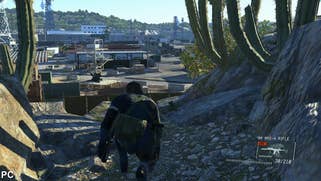

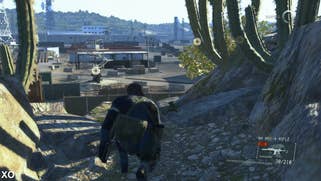
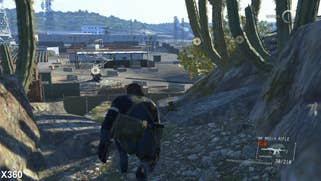
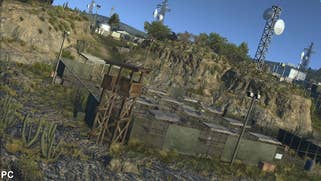
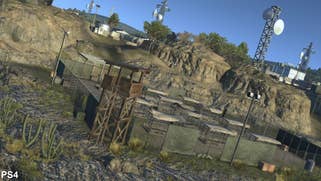

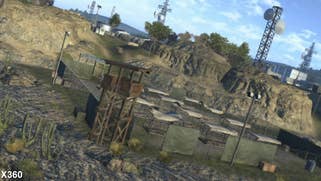



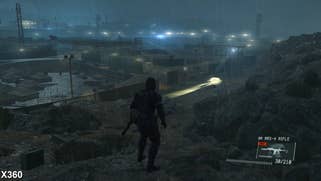




An impressive binary switch from PS4 and Xbox One is also possible through the lighting option. This boosts the number of lit spotlights across the map, and in tandem with updated shadow resolution, the entire lighting model is much more refined as Snake weaves through the base at night. For side-ops missions, the PC also adds atmospheric simulation by default. This is a feature of the PS4 version, allowing clouds to cast shadows as they pass the sun's light, as opposed to the Xbox One's static skybox. Bizarrely, there's no way to toggle this mode using the PC menus, regardless of your lighting preset.
With all these improvements in the bag, the Fox Engine's next hurdle is nailing a solid grade of performance across a range of setups. In testing our Core i7 3770K machine (clocked to 4.3GHz) with 16GB of RAM, it's apparent that a £300 card like the GTX 780 Ti has no issues here at all. The 60fps line is cleanly met at 1080p at maxed settings, but due to an arbitrary cap we can't push this frame-rate any higher. Even with v-sync disabled, a 60Hz ceiling is in place, and tearing only appears if the engine happens to drop below this top figure.
We realise that not everyone is running high-end GPUs though - and thankfully, so does Kojima Productions as Ground Zeroes is well suited for budget cards. The extra high preset is a write-off for circa £100 cards like the R7 260X or the classic HD 7850 in their 1GB forms - but there's enough flexibility to turn this around. Certainly, with a VRAM footprint of 1783MB on maximum settings, we see the former card struggling at 15-20fps, while the latter is within the 20-25fps range. This isn't aided by the presence of nasty frame-pacing issues on both AMD cards, causing disjointed motion when running below this line. Graphics data swaps between onboard GDDR5 and the system's main DDR3 pool, causing unacceptable stutter.
However, shifting to the game's default settings, this VRAM demand slips down to a more bearable 1423MB - which seemingly offers enough leeway for 1GB cards to operate once further tweaks to the settings are made. Switching shadows to medium but with every other preset at high, a 60fps lock is attainable for both these AMD cards at the PS4's visual quality. A resolution of 1600x900 is necessary for the R7 260X to keep this number a perfect lock at this quality, but the other card happily holds at 1080p60.




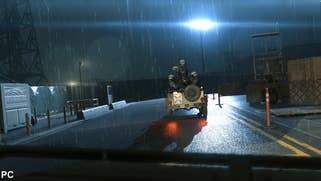
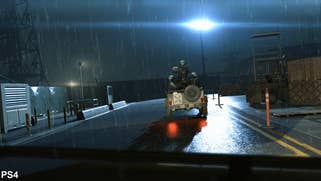
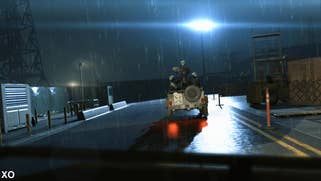
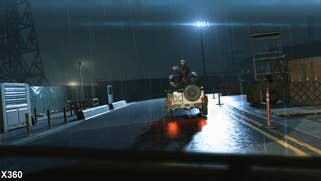




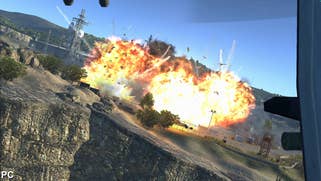
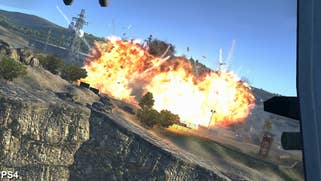
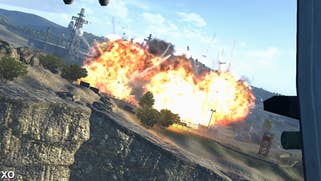
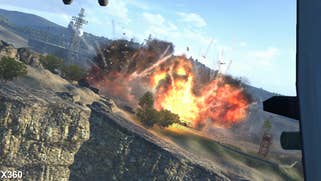
Budget-orientated gaming cards with 2GB of GDDR5 memory, such as the GTX 650 Ti Boost and GTX 750 Ti, can stretch to 30-40fps while maxed out. This makes it possible to use the game's built-in 30fps frame-rate cap to produce a last-gen grade of performance, while still hitting peak visual returns. Alternatively, a 60fps refresh is attainable by attacking the bottlenecks, which in Ground Zeroes' case are shadows, screen filtering and SSAO. Once these are lowered a notch, that crucial 60fps lock comes back into view.
The Fox Engine leans heavily on any chosen GPU, but remains flexible on the CPU side. In testing the game on a budget rig, featuring a Core i3 4130 processor backed by the sub-£100 Nvidia GTX 750 Ti, the game's default settings are surprisingly playable at around 60fps, only wobbling during heavy post-processing work. However, moving to an i5 processor stabilises this performance for the card, and a further upgrade to the GTX 760 (at £150) clears the air completely for smooth 60Hz playback at high settings on either processor - though to run this game at its extra high presets at PS4/Xbox One frame-rates, you will require £200+ graphics hardware.
Konami has also mooted 4K support for this PC version of Ground Zeroes. Quite why this is a marketing point is a little bizarre, as every game worth its salt should be able to render at the prescribed 3840x2160 resolution. At a recent Nvidia press event we attended, the company was asked what 'enhanced 4K support' actually meant, and while it varies from game to game, it seems that the bare minimum is to ensure that the HUD elements scale effectively (and few library titles do). From our perspective, if a game is claiming 4K support, ideally we want to see optimisations directly addressing this extreme resolution and we want to it to run at least at console quality settings with a minimum 30fps - on a single graphics card.

Ground Zeroes just about makes the grade here. On the 780 Ti we tested with this title, you can play the game nicely enough at 4K with a capped 30fps on the top-end extra-high presets. Removing the limit, we hit 60fps on high settings, but with screen-filtering set to low and shadows to medium. This still causes occasional stutter down to 55fps, addressed by turning off SSAO - fine for the main night-time mission, but it does leave the day-time excursions looking rather plain. Both Nvidia and AMD now have downscaling modes for their GPUs, opening up 4K rendering even to those with 1080p screens. Ground Zeroes downscaled beautifully, to the point where we'd take our compromised 4K set-up over the maxed 1080p experience - for the main mission at least.
Metal Gear Solid: Ground Zeroes on PC - the Digital Foundry verdict
Having proven its technical mettle on console already, Ground Zeroes on PC continues a very strong run for Kojima's latest. Rather than rest on its laurels with fixed, console-grade graphics, it caters to most needs with a string of worthwhile visual upgrades. The boldest of these is its broadened object LODs and added lights - each pushing past what's possible on PS4 - and only slightly let down by a missing option to run above 60fps. With so many options to hand, this ranks as a very clean, solid conversion.
But without a doubt the most impressive part is its scalability. The game looks superb on its default settings and the notion of getting 60fps gameplay from entry-level enthusiast graphics cards at HD resolutions is highly commendable. At just 3GB in size, Ground Zeroes is a nimble and polished sample of the Fox Engine on PC - it takes the excellent PlayStation 4 game and provides enough in the way of upgrades to make us eagerly await a more thorough work-out for the technology in The Phantom Pain.






